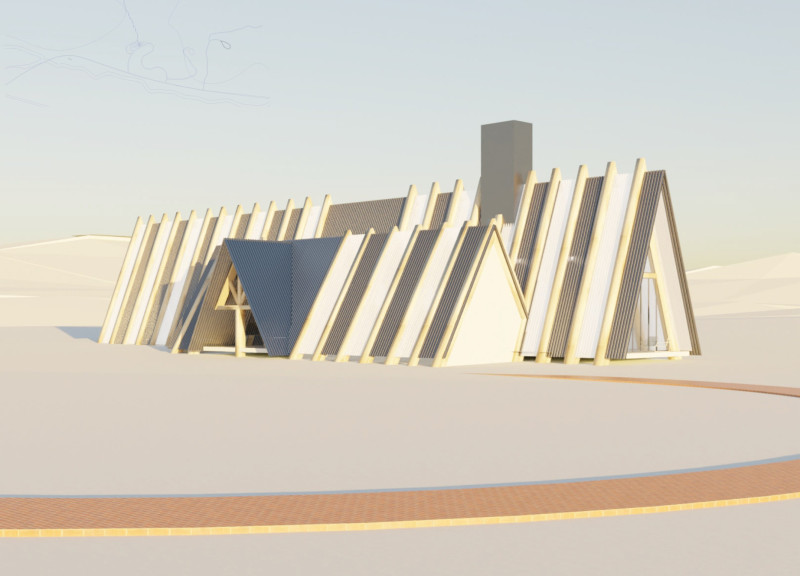5 key facts about this project
At the heart of this design is a conceptual framework that emphasizes [insert key ideas, e.g., sustainability, modernization, community-oriented spaces], driving both the aesthetic qualities and practical functions of the building. The architect has approached the design with a keen sensitivity to the surrounding environment, integrating both natural elements and urban fabric into the project. This integration promotes a harmonious relationship between the structure and its locale, allowing the architecture to reflect local culture and historical context.
A prominent feature of the project is its innovative use of materials, which are chosen for their performance and aesthetic characteristics. The primary material, concrete, forms a robust structural framework that not only supports the building’s weight but also provides thermal mass, contributing to energy efficiency. Furthermore, extensive use of glass in the façade introduces an element of transparency and fluidity, inviting natural light while offering expansive views of the surroundings. This openness fosters a strong connection between indoor and outdoor spaces, enhancing the occupants' experience.
Complementing these materials, the use of wood adds warmth and a tactile quality that invites human interaction. This choice serves to balance the often cold, hard surfaces of concrete and glass, creating a more welcoming atmosphere. Steel elements are employed strategically to create larger spans and more flexible internal spaces, reinforcing the overall design's openness and adaptability. The combination of these materials not only speaks to modern design principles but is also indicative of the project's commitment to sustainability and local sourcing, as the materials have been selected with great consideration for their environmental impact.
The layout of the building is carefully organized to promote efficiency and flow. Open areas encourage social interaction, while private zones are delineated in a way that maintains individual privacy without isolating occupants. This design enables people to engage in communal activities, supporting a vibrant community culture, which is especially relevant in today's urban environments. Key communal spaces include [insert specific areas, e.g., a central atrium, multipurpose rooms, outdoor terraces] designed to accommodate various activities and encourage collaboration among users.
Unique design approaches integrated into this project further enhance its appeal and functionality. Notable features include [mention distinctive architectural elements or technologies, e.g., landscaped roofs, kinetic facades, integrated art installations] that contribute to the overall narrative of the architecture. These elements ensure that the building remains dynamic and adaptable to the changing needs of its users while also responding to environmental conditions.
Moreover, the project incorporates passive design strategies aimed at minimizing energy consumption and maximizing comfort. Features such as [insert specific design strategies, e.g., natural ventilation, optimized solar orientation, rainwater harvesting] have been integrated to ensure that the building functions efficiently year-round.
In conclusion, this architectural project encapsulates a multitude of ideas that converge to create a meaningful space within its community. By prioritizing sustainability, materiality, and user experience, the design stands as a testament to what contemporary architecture can achieve. To delve deeper into this project and explore its architectural plans, sections, designs, and innovative ideas, readers are encouraged to examine the detailed presentation, which provides a comprehensive understanding of its architectural merit and vision.


























